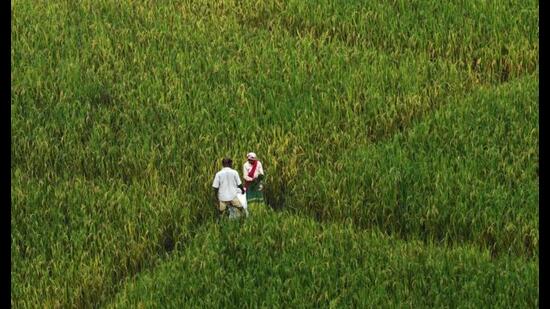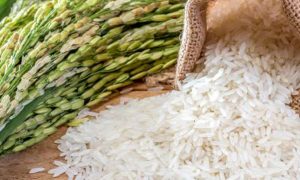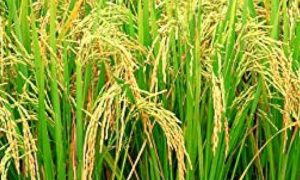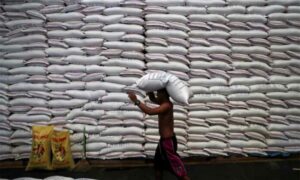FAO’s call for water-wise farming: Key to India’s agricultural growth and farmers’ economic development

Agriculture uses 72% of global freshwater, but climate change and poor practices are causing scarcity. The FAO supports India’s water-efficient farming via projects like “Per Drop More Crop” and sustainable models in Odisha, Punjab, and Andhra Pradesh. Emphasizing innovations, policy reforms, and capacity-building, FAO urges efficient water use to secure food systems and rural livelihoods amid rising challenges.
Agriculture is the world’s largest consumer of freshwater, accounting for approximately 72% of all withdrawals, with groundwater contributing around 30% of irrigation water. However, this vital sector faces mounting risks due to water scarcity. Climate change, coupled with intensive agricultural practices, is disrupting rainfall patterns and depleting groundwater levels. Enhancing water use efficiency is therefore critical to ensuring food security and supporting rural livelihoods.
The Food and Agriculture Organization of the United Nations (FAO) emphasizes the importance of efficient water use in agriculture and allied sectors as a cornerstone for sustainable agriculture and the economic development of farmers in India.
The Imperative of Water-Efficient Agriculture
In India, rainfed agriculture is a lifeline for millions of small-scale farmers. Yet, erratic weather patterns—droughts, floods, unseasonal rainfall, and prolonged dry spells—combined with poor water management, have strained freshwater resources and ecosystems, increasing the vulnerability of smallholder livelihoods.
Since the Green Revolution, Indian agriculture has relied heavily on water-intensive crops like rice and wheat. In northern states, where rainfall meets only half the water demand, groundwater depletion has reached alarming levels. Overdrawing from aquifers has led to soil salinity and rendered 1.5 million hectares of farmland unproductive annually. Addressing these challenges requires a multifaceted approach: improving irrigation water productivity, reducing wastage, and developing scalable water management models. This demands technical innovation, institutional reform, behavioral change at the farm level, and robust policy and governance frameworks.
FAO’s Support for Sustainable Water Management
The Government of India has a strong commitment to improving water use efficiency through initiatives like “Per Drop More Crop” under the Pradhan Mantri Krishi Sinchayee Yojana (PMKSY). The Ministry of Jal Shakti is also modernizing irrigation infrastructure to reduce water loss and enhance delivery. FAO supports these national efforts by providing technical assistance, including the computation of SDG indicators 6.4.1 (Water Use Efficiency) and 6.4.2 (Level of Water Stress)—key tools for tracking progress and managing freshwater resources.
Innovative Models in Action
In Odisha, through a GEF-funded project, FAO is working with the Department of Agriculture & Farmers’ Empowerment to implement a landscape restoration approach. This includes measures such as constructing water harvesting ponds and using gravity-fed canal systems to support irrigation during the dry season, helping reduce dependence on monsoon rains. Farmers are also exploring the cultivation of pulse crops using residual soil moisture and adopting improved agronomic practices to use water more efficiently.
Another initiative under the Green-Ag project is the ‘10% Model’, which encourages farmers to allocate a portion of their land—around 10%—to conservation activities like bunding, plantation, and water harvesting. This approach aims to improve irrigation efficiency, reduce soil erosion, and promote the use of bio-fertilizers. The use of precision irrigation techniques is also being encouraged to help minimize water loss and support more efficient farming in water-limited areas.
Punjab and Haryana: Transitioning from Rice-Wheat Systems
In Punjab and Haryana, the GEF 7 Sustainable Food Systems project, in collaboration with ICAR Institutes and State Agricultural Universities, is supporting efforts to gradually move away from water-intensive rice-wheat cropping systems toward more sustainable and resource-conscious agricultural practices. The initiative encourages crop diversification with varieties that require less water, along with the use of efficient seeding and irrigation methods. It also promotes soil health through crop residue incorporation and the adoption of techniques such as bio-mulching and cover cropping, which help improve soil moisture retention and reduce reliance on groundwater.
Modernizing Irrigation Infrastructure
India is transitioning to pressure piped irrigation systems, which reduce water loss from seepage and evaporation and deliver water directly to fields. FAO, in collaboration with the Ministry of Jal Shakti, is building the capacity of Water User Associations to ensure effective governance and long-term sustainability of these systems.
Blue Transformation in Aquaculture
Under its Blue Transformation initiative, FAO is promoting sustainable aquaculture practices in Andhra Pradesh, with a particular focus on supporting small and marginal farmers. In partnership with the Department of Fisheries, FAO is helping to develop aquaculture model clusters in seven districts. These clusters aim to encourage the use of quality inputs, efficient technologies, and better water management practices. They also support the adoption of traceability and certification systems, promote fair water distribution, and encourage practices that are mindful of the surrounding ecosystems.
Securing the Future with Smart Water Solutions
India must lead the way in adopting water-conserving practices while boosting agricultural productivity. Efficient water use—more crop per drop is essential for building resilient ecosystems capable of withstanding climate change, population growth, and rising food demand. As FAO celebrates its 80th anniversary in 2025, it calls for a renewed commitment to making every drop count. By modernizing irrigation, adopting innovative water management models, and fostering cross-sector collaboration, we can secure a water-resilient future. Water is life and by protecting it, we protect the foundation of our food systems.
To Read more about Rice News continue reading Agriinsite.com
Source : ET Edge Insights















